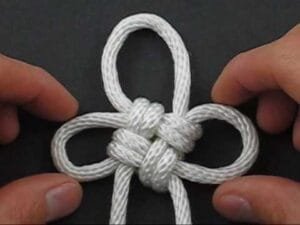Table of Contents
The art of bondage often requires the use of intricate knots to ensure safety, security, and aesthetic appeal. Among the countless knots available, the Double Coin Knot and Carrick Bend are both highly regarded for their effectiveness in binding two strands of rope together. Let’s explore these knots, their differences, and their suitability for different scenarios.
Double Coin Knot: Aesthetic and Secure
The Double Coin Knot, also known as the Cloverleaf Knot, is widely praised for its aesthetic appeal. Its symmetrical design not only looks pleasing but also provides a secure means of attaching two strands of bondage rope. This knot is particularly advantageous in situations where both form and function are essential. Its design makes it less likely to slip or loosen under tension, ensuring a reliable binding throughout the session.
Carrick Bend: Strength and Stability
The Carrick Bend is another popular choice for combining two strands of rope. This knot is known for its strength and ability to handle heavy loads, making it ideal for scenarios requiring extra stability. The Carrick Bend’s structure distributes stress evenly along the ropes, reducing wear and tear and enhancing the durability of the knot. While it may not be as visually intricate as the Double Coin Knot, its robust nature makes it a dependable option for secure bindings.
Choosing the Right Knot
Deciding between the Double Coin Knot and the Carrick Bend ultimately depends on your priorities and the specific requirements of your bondage practice. If you value visual appeal and a secure hold that resists slipping, the Double Coin Knot is an excellent choice. On the other hand, if strength and stability are paramount, the Carrick Bend may better suit your needs. Both knots offer distinct advantages, and understanding their differences can help you make an informed decision when incorporating them into your bondage routine.
you might like to explore our other Bondage knots and resources







